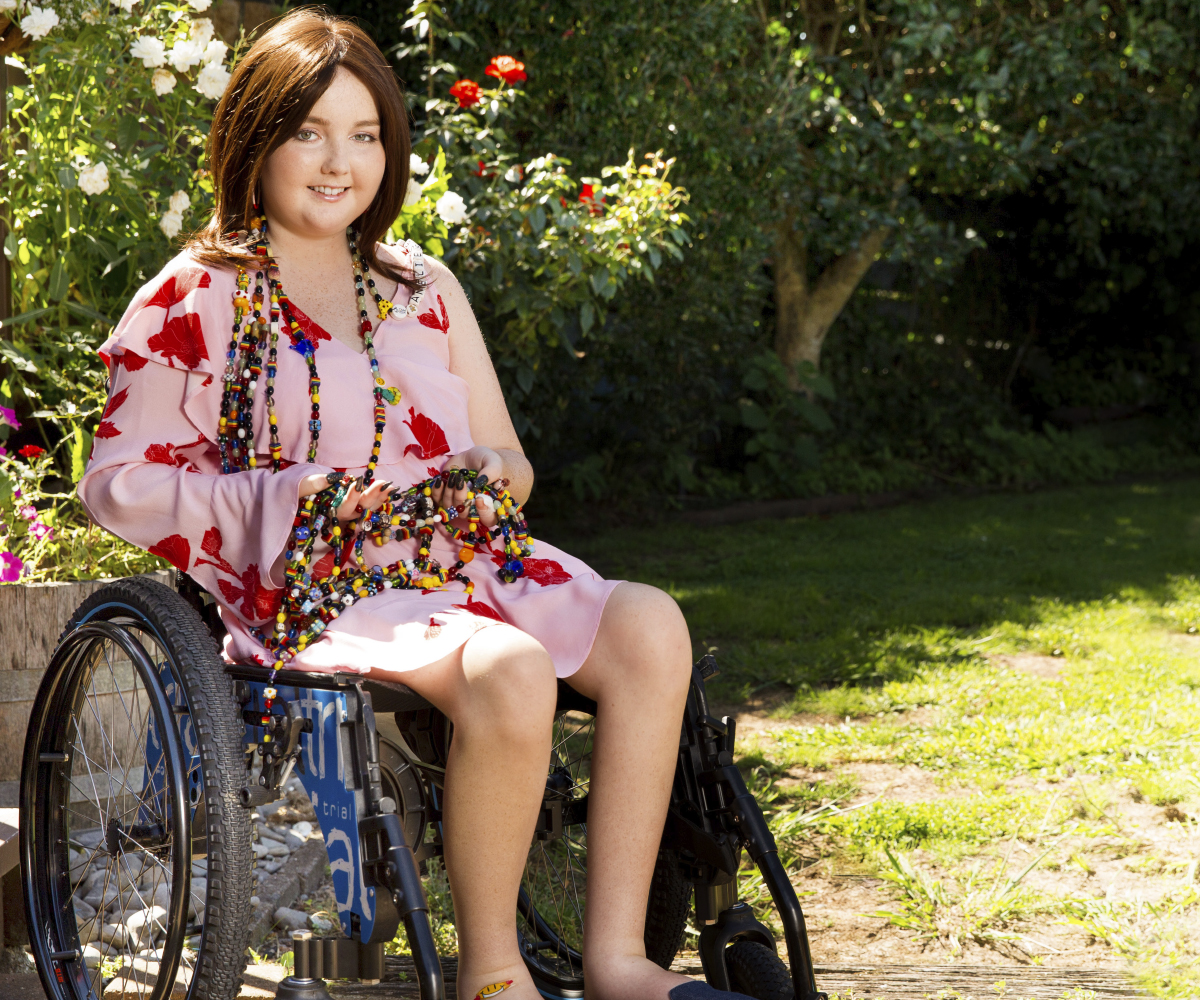The day gorgeous, bright-eyed Gabrielle Stephens was born, the midwife knew instinctively there was something different about her.
Mum Megan recalls, “She held Gabby up and said, ‘I don’t normally say this, but there’s something special about this baby.’ And as it turns out, she was right – Gabby is one in a million.”
This lovely little seven-year-old from Nelson is believed to be the only person in New Zealand with a rare premature-ageing disorder known as dyskeratosis congenita (DC).
Although in many ways she’s a typical girl who loves unicorns, Brownies and Lego, Gabby’s tiny hands are dotted with age spots and her skin is paper-thin. Like most children with DC, her bone marrow has struggled to produce enough blood cells, and her fingernails and toenails are falling off.

Gabby’s bones have the density of an elderly woman’s and her joints ache in winter. While her heart is so far fine, in coming years, the little girl will likely face lung, liver and gastrointestinal problems, and she has a heightened risk of developing leukaemia and cancers of the skin and throat.
“Many of the things you would expect to see in a 70 or 80-year-old, you see in Gabby,” explains Megan.
Despite being diagnosed with the incurable disorder at age four, Gabby – who lives with her parents, Megan and Andrew, both 38, and her siblings, Ruby, 12, and Lachlan, 10 – has an incredible zest for life and an uncanny ability to draw people towards her.
“It’s all Gabby knows, so we just run with that,” tells Megan. “She knows it’s not going to go away. For us, it’s just a normal part of life.”
As a baby and preschooler, Gabby was constantly sick. “We’re cruisy parents, so we weren’t too concerned,” recalls Megan. “We just thought she was one of those sickly kids.”
But then at age four, Gabby changed colour, tells Megan. “Her grandmother, kindy teachers and even our doctor commented. She was so pale.”

Gabby with her brother and bone marrow donor Lachlan, and big sis Ruby.
Gabby’s doctor sent her for a blood test and within hours, Megan received a call at work. “He said, ‘Everything points to leukaemia.’ I went into autopilot from there.”
The brave little girl was transferred to the Children’s Haematology Oncology Centre at Christchurch Hospital and spent four days undergoing a battery of tests.
She had severe aplastic anaemia – a potentially fatal disorder caused when bone marrow stops producing enough new blood cells – and doctors were desperately trying to find answers.
“On the fifth day, they said, ‘We’ve ruled out leukaemia, but don’t celebrate yet,'” remembers Megan.
It took a further six weeks for the family to be told their precious youngest child had a progressive genetic disorder. Megan and Andrew have both tested negative, so in Gabby’s case, it seems likely to be caused by a gene mutation
at conception.
“When they gave us the diagnosis, they said leukaemia would have been a better option,” says Megan. “With leukaemia, there is treatment and a chance of a cure.”
In July 2015, Gabby had a bone-marrow transplant at Starship Children’s Hospital in Auckland. Brother Lachlan was the donor. “We were lucky,” says Megan. “It can often be a complicated and horrible journey, but in our case, it was a success and could not have gone better.”

She may look like a typical seven-year-old, but Gabby has the paper-thin skin and bone density of an elderly woman.
And in the two and a half years since her transplant, Gabby has gotten on with life. She’s a determined wee girl who throws herself into everything.
“If Gabby wants to do something, we let her because in a few years’ time, things could be far more difficult,” says Megan. “The bone-marrow transplant wasn’t a magic fix and it’s not till the teenage years or early 20s that things can go pear-shaped.”
Although Gabby is the only known person in NZ with the disorder, three others have been diagnosed in the past – and all from Nelson. They all died in their teens or 20s.

Despite her condition, parents Andrew and Megan encourage Gabby to throw herself into gymnastics and other hobbies.
Megan has joined an Australasian support group for DC and later this year, the family will travel to Portland in the US to attend a family education summit. While there, they will also travel to Boston Children’s Hospital, where Gabby will participate in a research study.
Gabby has regular scans and is vigilant with sunblock due to the risk of skin cancer, but she won’t let anything hold her back. As well as being a poster girl for the NZ Organisation for Rare Disorders’ Rare Disease Day, she does gymnastics and plays soccer.
“We can’t change anything,” says Megan. “All we can do is monitor Gabby closely, hope for the best and get on with life as a family.”

.jpg)
